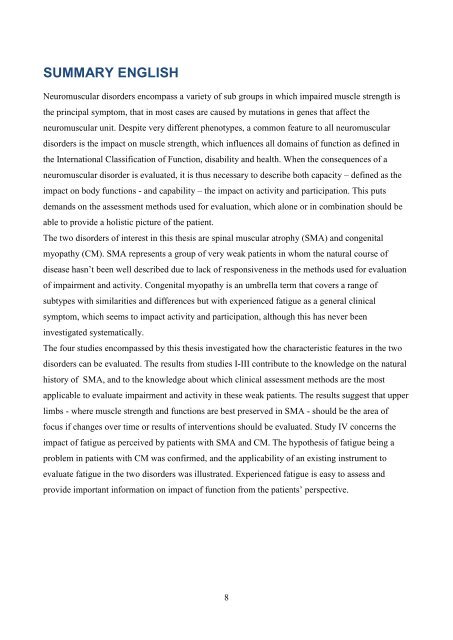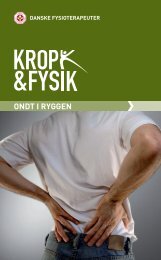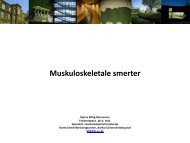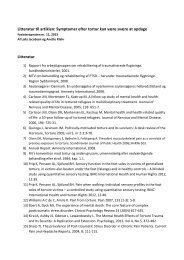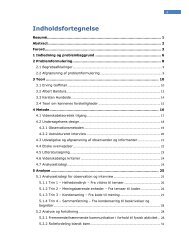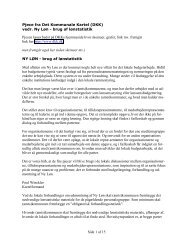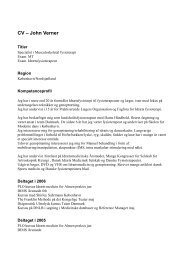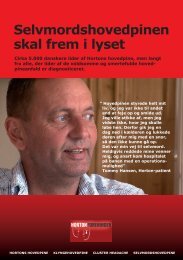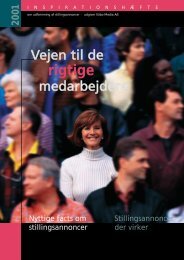Ulla Werlauff Methods to assess physical functioning - Danske ...
Ulla Werlauff Methods to assess physical functioning - Danske ...
Ulla Werlauff Methods to assess physical functioning - Danske ...
Create successful ePaper yourself
Turn your PDF publications into a flip-book with our unique Google optimized e-Paper software.
SUMMARY ENGLISH<br />
Neuromuscular disorders encompass a variety of sub groups in which impaired muscle strength is<br />
the principal symp<strong>to</strong>m, that in most cases are caused by mutations in genes that affect the<br />
neuromuscular unit. Despite very different phenotypes, a common feature <strong>to</strong> all neuromuscular<br />
disorders is the impact on muscle strength, which influences all domains of function as defined in<br />
the International Classification of Function, disability and health. When the consequences of a<br />
neuromuscular disorder is evaluated, it is thus necessary <strong>to</strong> describe both capacity – defined as the<br />
impact on body functions - and capability – the impact on activity and participation. This puts<br />
demands on the <strong>assess</strong>ment methods used for evaluation, which alone or in combination should be<br />
able <strong>to</strong> provide a holistic picture of the patient.<br />
The two disorders of interest in this thesis are spinal muscular atrophy (SMA) and congenital<br />
myopathy (CM). SMA represents a group of very weak patients in whom the natural course of<br />
disease hasn’t been well described due <strong>to</strong> lack of responsiveness in the methods used for evaluation<br />
of impairment and activity. Congenital myopathy is an umbrella term that covers a range of<br />
subtypes with similarities and differences but with experienced fatigue as a general clinical<br />
symp<strong>to</strong>m, which seems <strong>to</strong> impact activity and participation, although this has never been<br />
investigated systematically.<br />
The four studies encompassed by this thesis investigated how the characteristic features in the two<br />
disorders can be evaluated. The results from studies I-III contribute <strong>to</strong> the knowledge on the natural<br />
his<strong>to</strong>ry of SMA, and <strong>to</strong> the knowledge about which clinical <strong>assess</strong>ment methods are the most<br />
applicable <strong>to</strong> evaluate impairment and activity in these weak patients. The results suggest that upper<br />
limbs - where muscle strength and functions are best preserved in SMA - should be the area of<br />
focus if changes over time or results of interventions should be evaluated. Study IV concerns the<br />
impact of fatigue as perceived by patients with SMA and CM. The hypothesis of fatigue being a<br />
problem in patients with CM was confirmed, and the applicability of an existing instrument <strong>to</strong><br />
evaluate fatigue in the two disorders was illustrated. Experienced fatigue is easy <strong>to</strong> <strong>assess</strong> and<br />
provide important information on impact of function from the patients’ perspective.<br />
8


